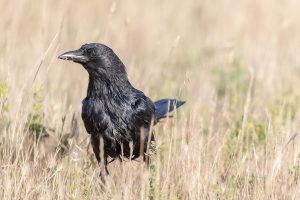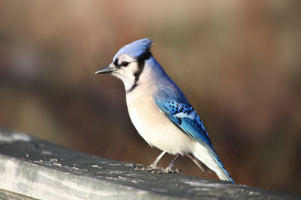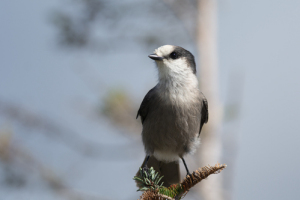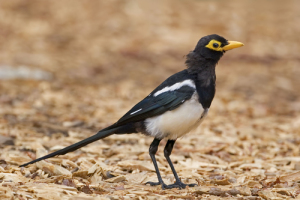By: David Torres
The Corvidae family, also known as the crow family, consists of jays, magpies, treepies, nutcrackers, choughs and of course ravens and crows. They are a very diverse family of birds that are known to be adaptive and have expanded to almost every habitat on earth.
Birds of the crow family are not all migratory birds, instead, many species are year round residents in certain geographic locations. Corvids are omnivorous, eating from many sources. Being so smart and omnivorous allows them to expand their geographical range, perhaps more than any other family of birds.
Corvids show quick intelligence and curiosity and have been observed using tools. They may be aggressive and may even seem to be playful. The Stellar’s Jays sometimes steal nuts out of the paws of squirrels. A crow might attack a dog or cat just for fun, swooping down to give them a peck on the head.

Crows and Ravens
The crows and ravens are the best-known Corvids. There seems to be a crow or a raven on just about every continent. These range from the American Crow of North America to the Forest Raven of Tasmania and southern Australia. These species have ‘normal’ bills, but the White-necked Raven of southern and east Africa has a massive bill. These huge ravens, including the Common Raven Corvus corax, are the largest “songbirds” on earth. The best way to tell the difference between ravens and crows are their general size and bill shape.
Many crows and ravens are common and widespread, but some species are limited to single islands and some can be critically endangered. These Island crows are lesser-known and are few in number, but are being protected as best as possible through conservation acts.
Jays

There are over 40 species of jays. These are most abundant in North and South America. Two widespread and common North American jays, both of them bearing crests, are Steller’s Jay of the West, and Blue Jay in the East.

The northern species Canada Jay lives in forests across northern North America and ranges only to the most northern parts of California. It’s elusive and can be hard to find but is actually quite tame around campgrounds, and one of its local names is “Camp Robber.” for decades they have also been known as “Gray Jays”.
The Black-throated Jay of montane forests from southern Mexico to Honduras. Perhaps no Central American corvid is more highly sought than the Tufted Jay, it is endemic to cloud-forested barrancas in northwestern Mexico, moving in loose bands that are sometimes hard to find, but curious and approachable when located.
Magpies and Treepies
Several corvids bear the name “magpie.” The colorful tropical Asian genus Cissa, composed of four species including the Common Green-Magpie. Genus Urocissa is another, with five species, including the Red-billed Blue Magpie, found from China to Southeast Asia, and in the Himalayan foothills of India and Nepal.

The classic black-and-white magpies are in genus Pica. These are temperate, open-country birds. The Eurasian Magpie is a bird that is very well known to the work of Shakespeare and can also be found in several other European works of literature. The striking Yellow-billed Magpie is a California native, restricted to the state’s Central Valley and valleys of the coastal ranges.
There are 11 treepies in 4 genera, and the largest genera is Dendrocitta of south Asia. The Rufous Treepie is a widespread bird of India and can be seen all throughout southeast Asia. Like the magpies that are classified in the genus Pica, many treepies prefer more open scrub or woodlands.
Nutcrackers
High elevation corvids include 3 species of nutcrackers. Clark’s Nutcracker lives in the western mountain ranges of North America. Eurasian Nutcracker inhabits Palearctic coniferous forests from Europe to Siberia. Nutcrackers are omnivores, although they mostly feed on pine seeds throughout the year. They also eat other seeds, nuts, berries, insects, and even eggs of other birds.
Choughs and Jackdaws
Choughs look a lot like small crows except for their colorful bills. There are two species of chough, one red-billed and one yellow-billed and they are primarily found around the mountain ranges of the alps and, but there is a population of coastal cliff-nested Red-Billed Chough that inhabit a large area in Europe.
Jackdaws are small, short-billed, sociable corvids that use a wide variety of habitats, including parks and gardens. Eurasian Jackdaw is the Western representative of the two jackdaws in Eurasia. The Eurasian Jackdaw is gray-naped and pale-eyed. The more migratory Daurian Jackdaw of eastern Eurasia is dark-eyed and has black-and-white plumage that is reminiscent of the Piping Crow.
